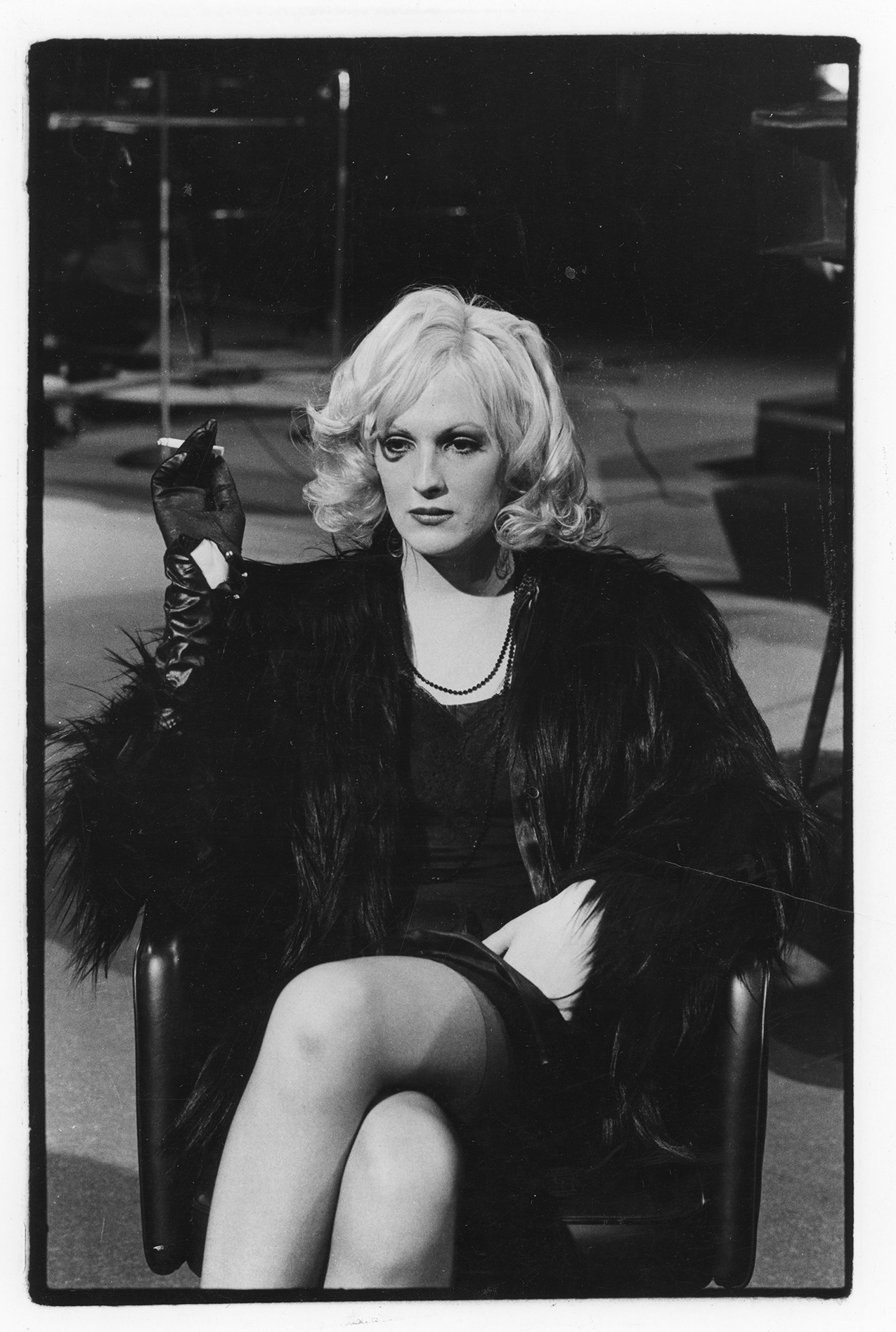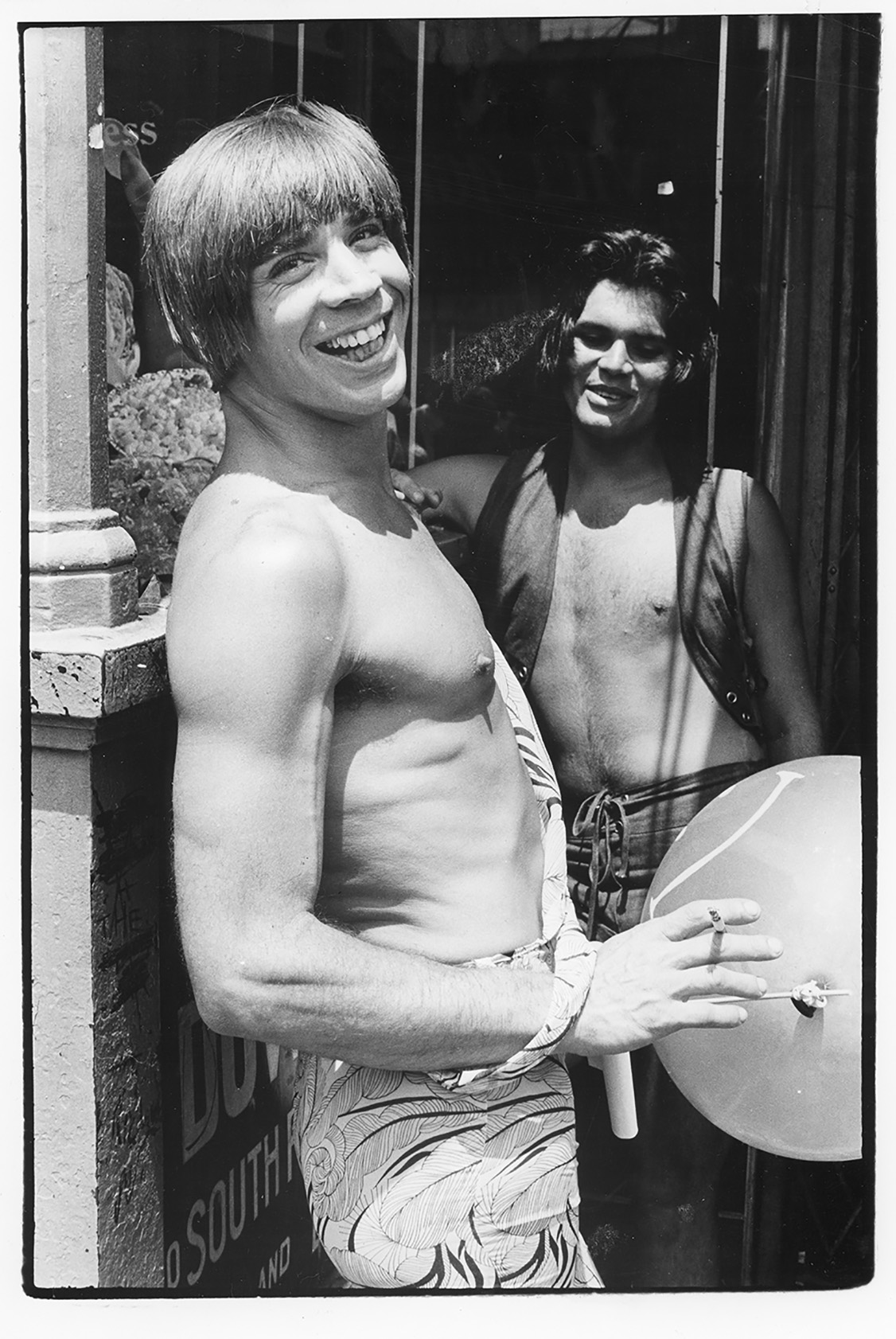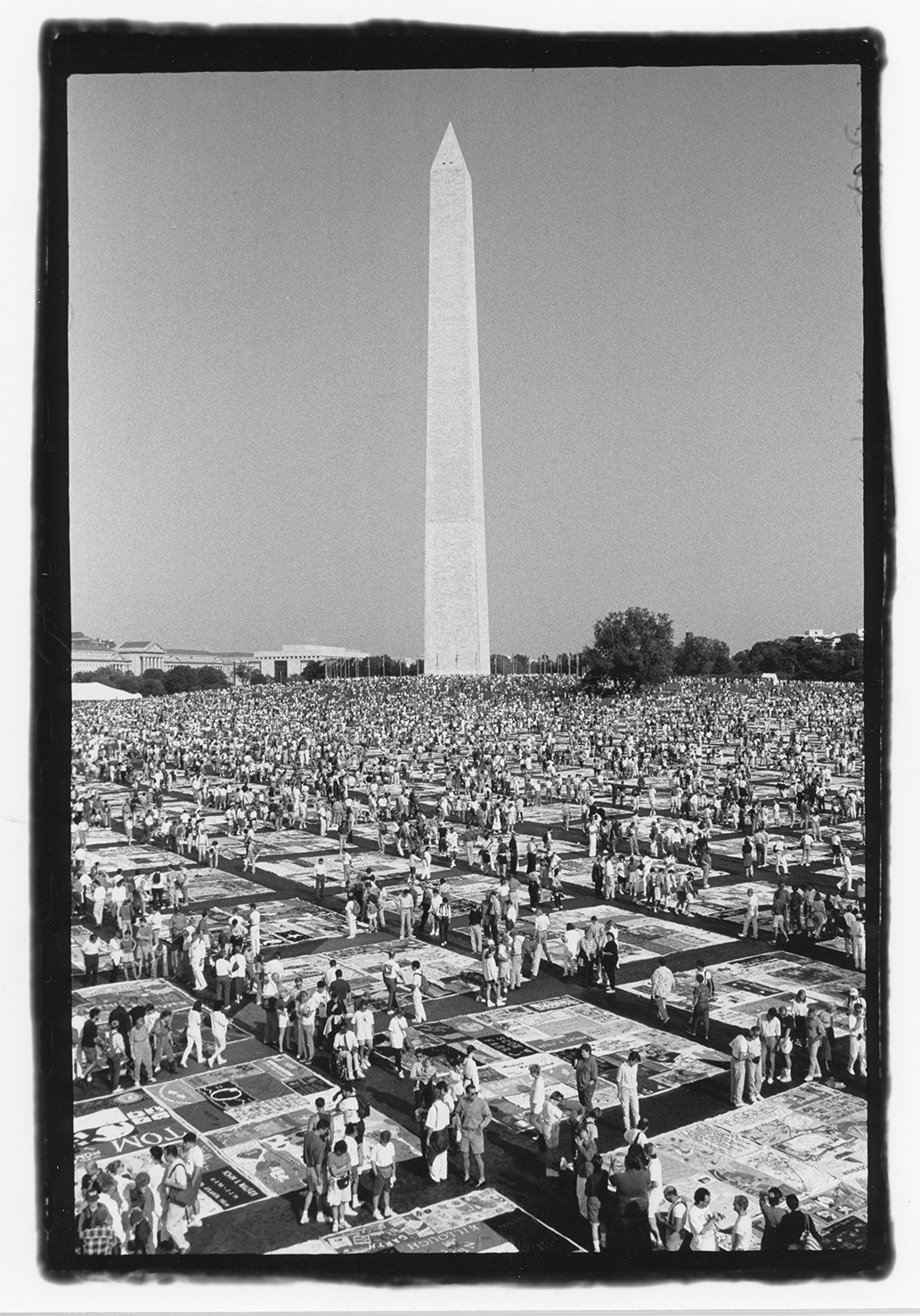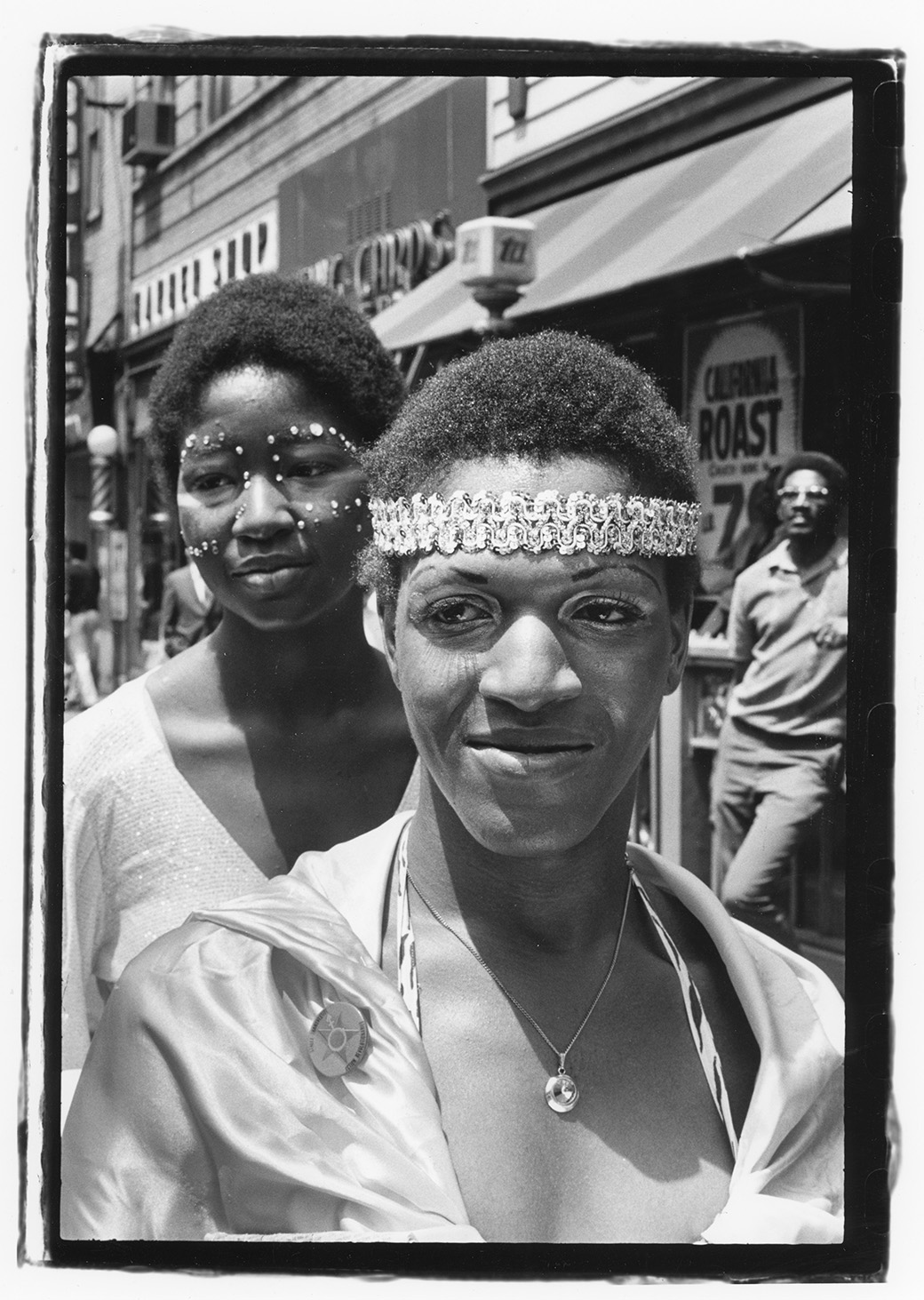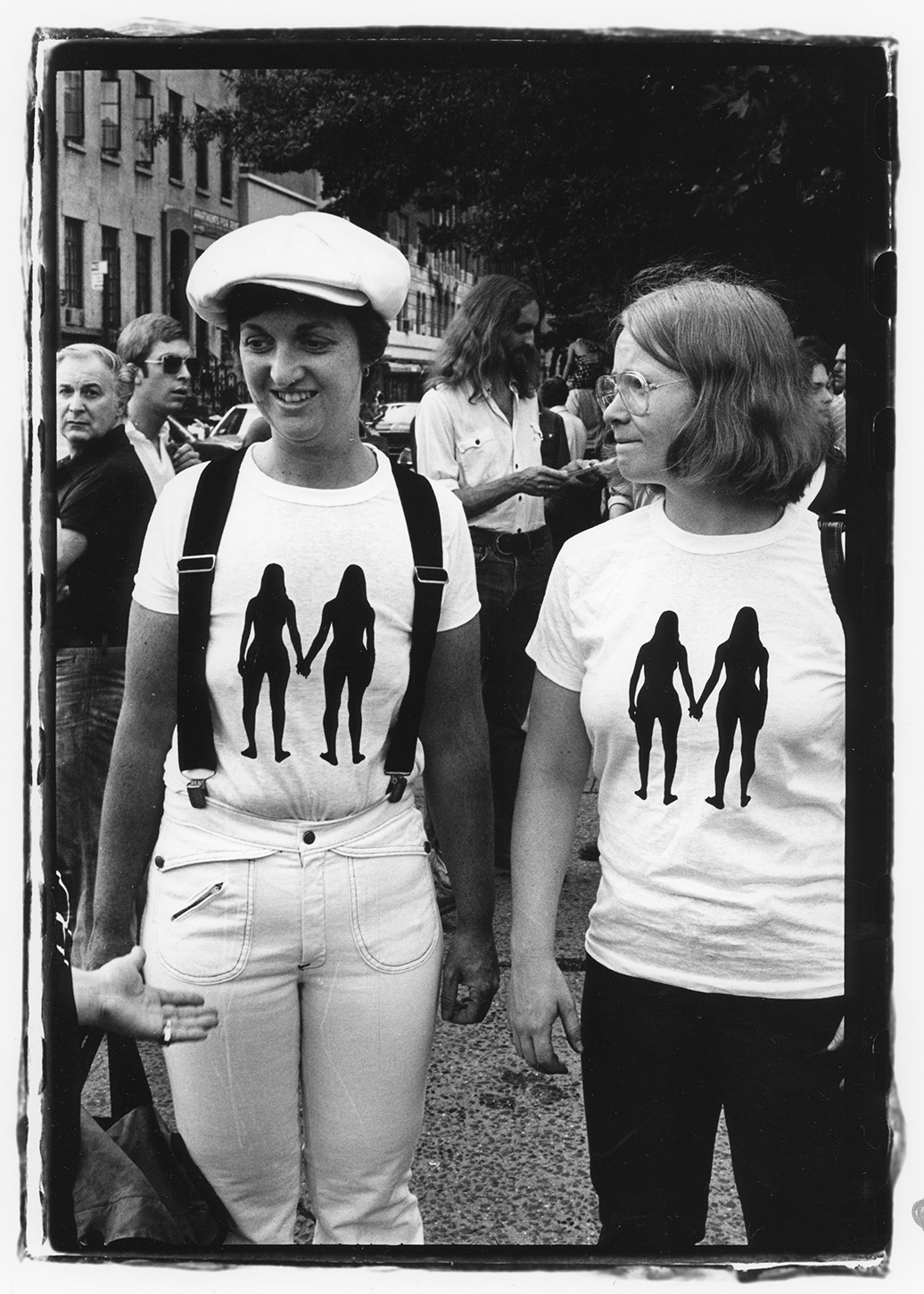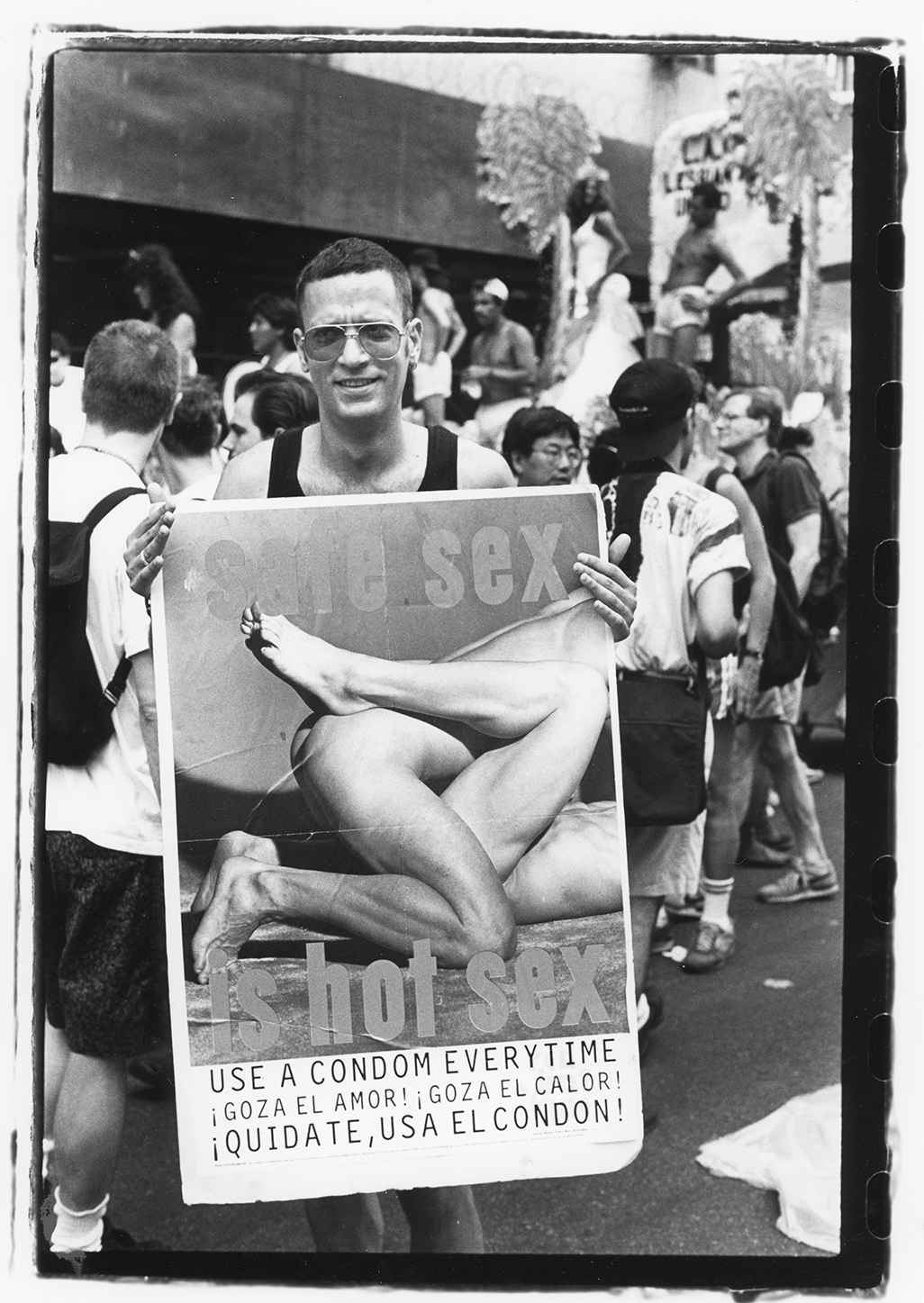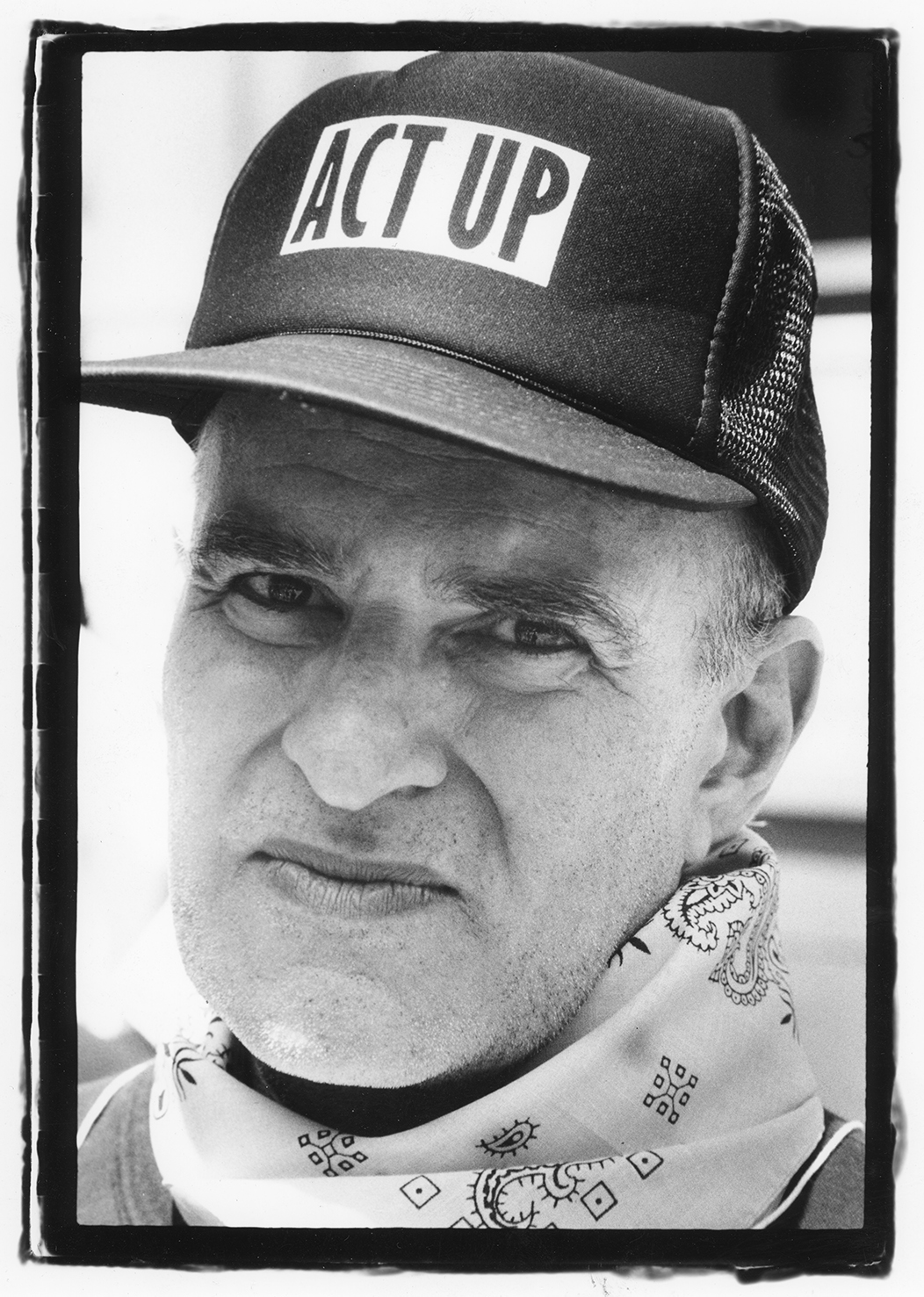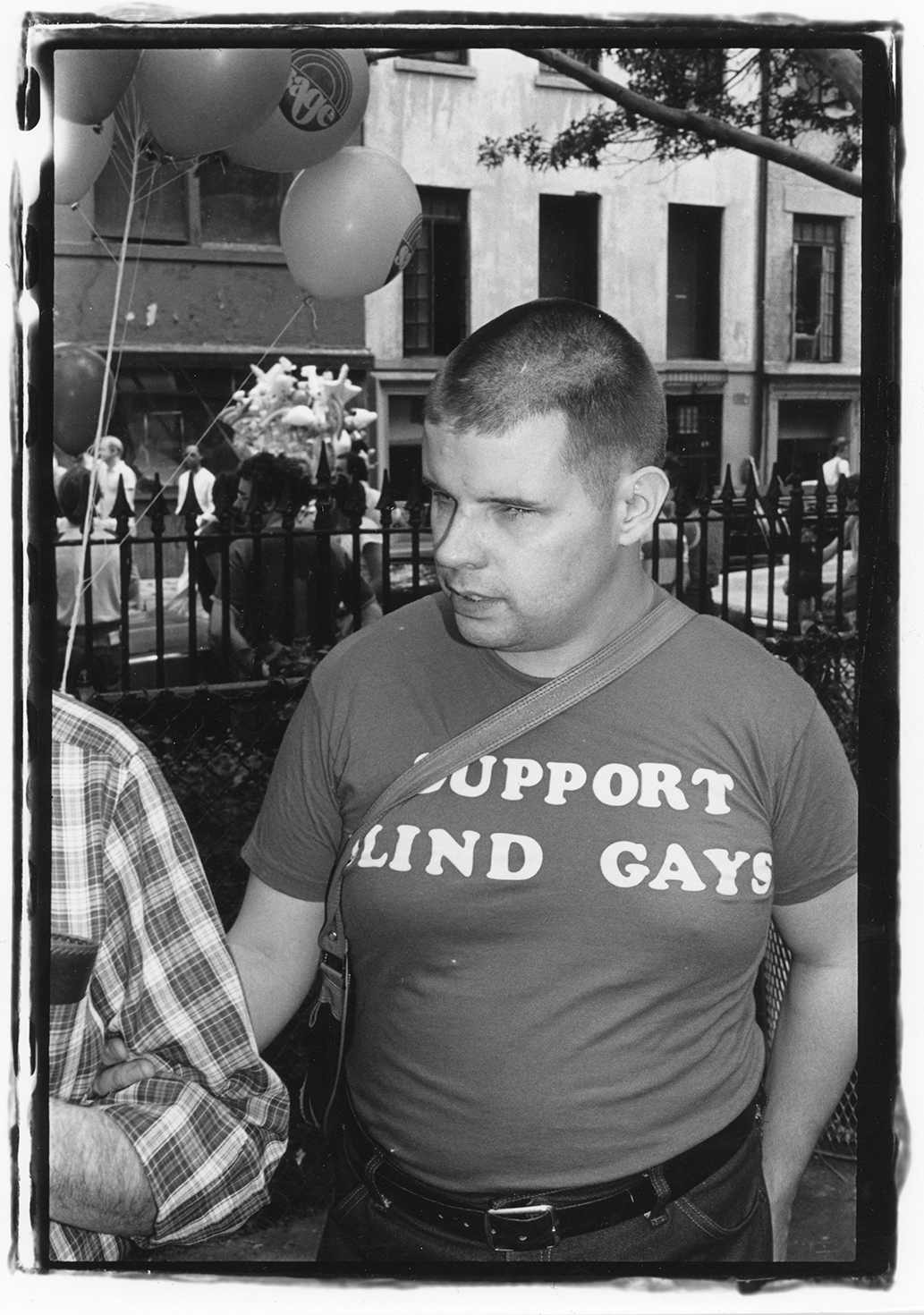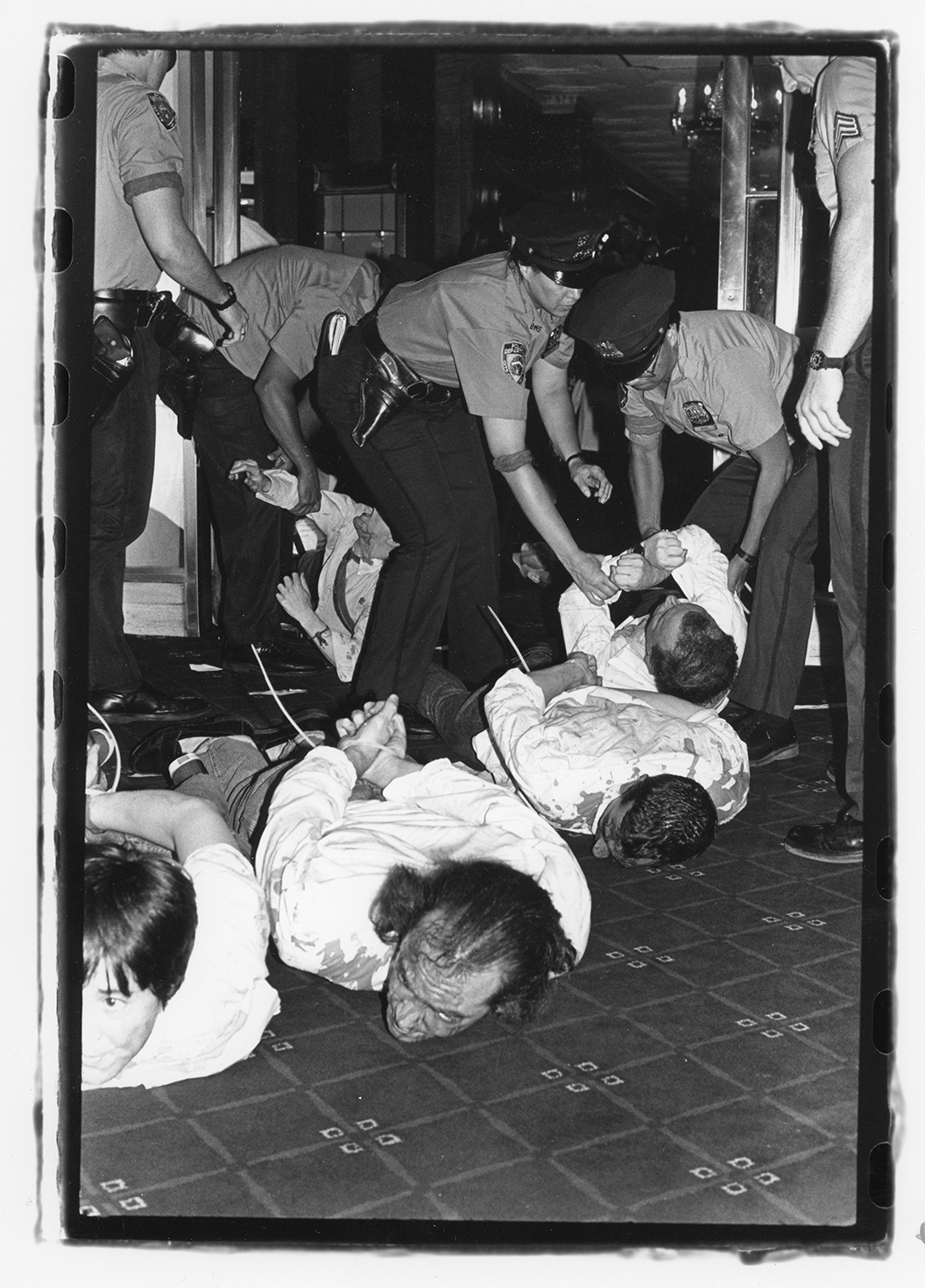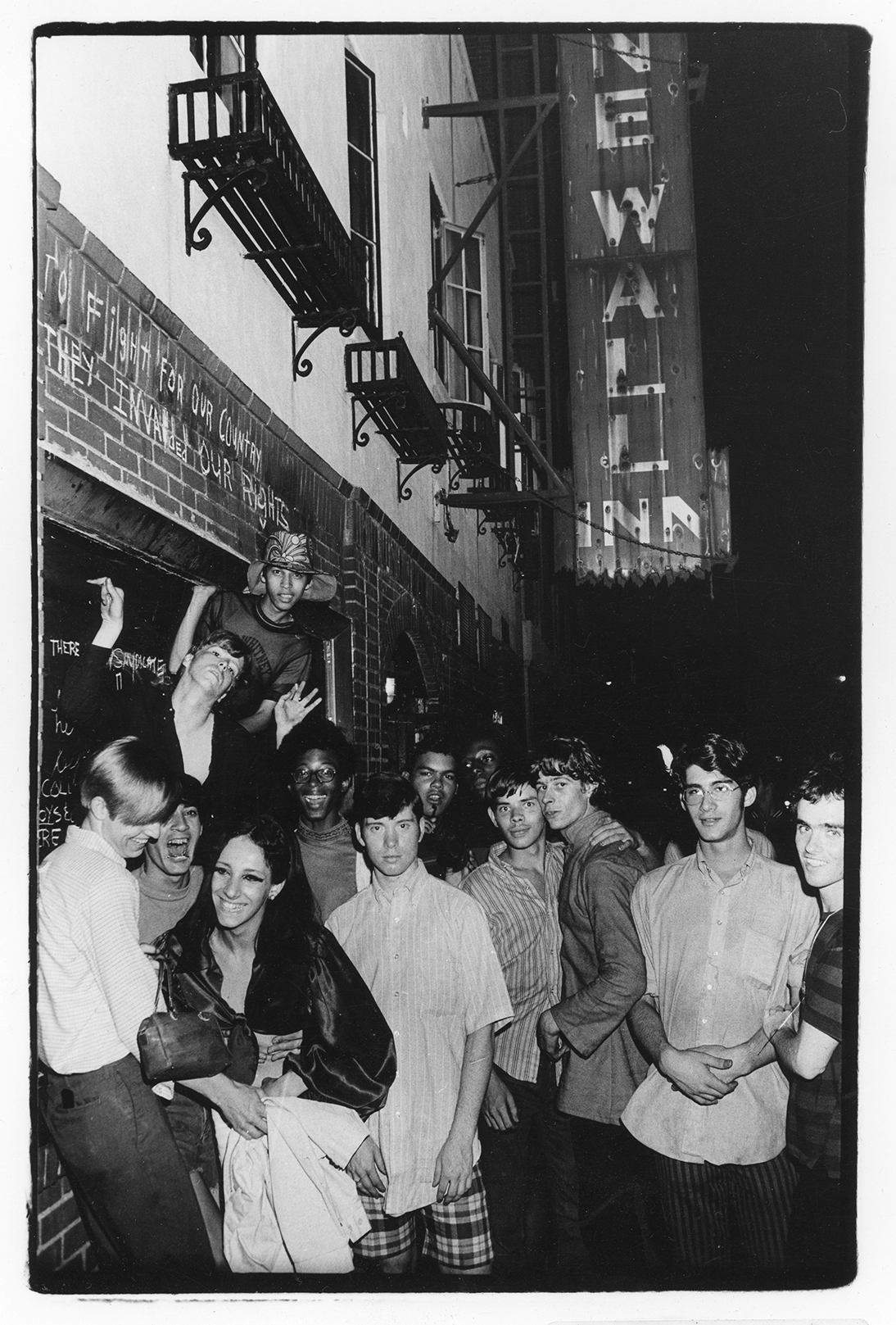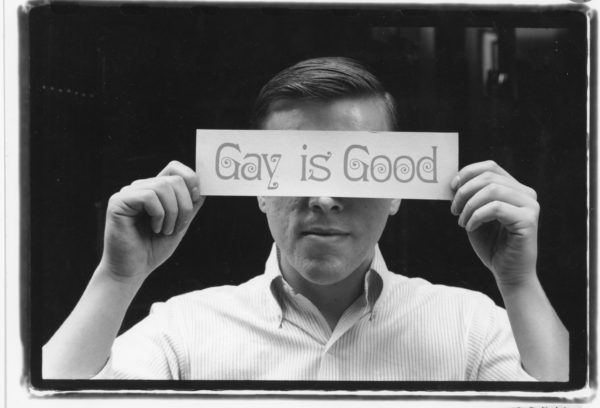
PHOTOGRAPHY BY FRED W. McDARRAH
Pride: Photographs After Stonewall by Fred W. McDarrah
Fred W. McDarrah was the first on-staff photographer for the Village Voice. His prolific photography captured both the pride and the struggles of the gay community toward the end of the 20th century. In 1994 McDarrah published a book of photographs focused on the changing queer community in Greenwich Village from the events of Stonewall up to the mid-1990s. 25 years later, a new, redesigned edition of McDarrah’s book has been released by OR Books — Pride: Photographs After Stonewall with a foreword by Hilton Als. It is no coincidence that the book was released this year, exactly 50 years after the Stonewall Riots. The book’s cover features several rioters and Stonewall patrons posing for a photograph during the riots. Above them, a message etched in chalk reads, “To fight for our country, they invaded our rights.”
Pride is split into two parts: photographs before Stonewall and photographs after Stonewall. The before section paints a vibrant picture of queer 1960s New York. Gay poets and writers like Frank O’Hara, W.H. Auden, and James Baldwin pose for portraits, a powerful photograph of the American transsexual icon Candy Darling, drag queens and transgender women competing in the Miss All-American Camp Beauty Pageant of 1967 are photographed wearing identical outfits and sashes that display their title. Actor-turned-activist, Jim Fouratt summarizes the decade: “I came to New York in the early ‘60s to be a bohemian/beatnik artist. I found the Actors Studio, Lee Strasberg, Greenwich Village, jazz, mary jane, gay bars, drag queens, Andy Warhol, the Judson Church performers, the Living Theater, the Caffe Cino and La Mama, civil rights marches and sit-ins, the Open Theater, Communist, poetry, dirty old men, Lenny Bruce, rich people, and my first real boyfriend. The decade moved fast.”


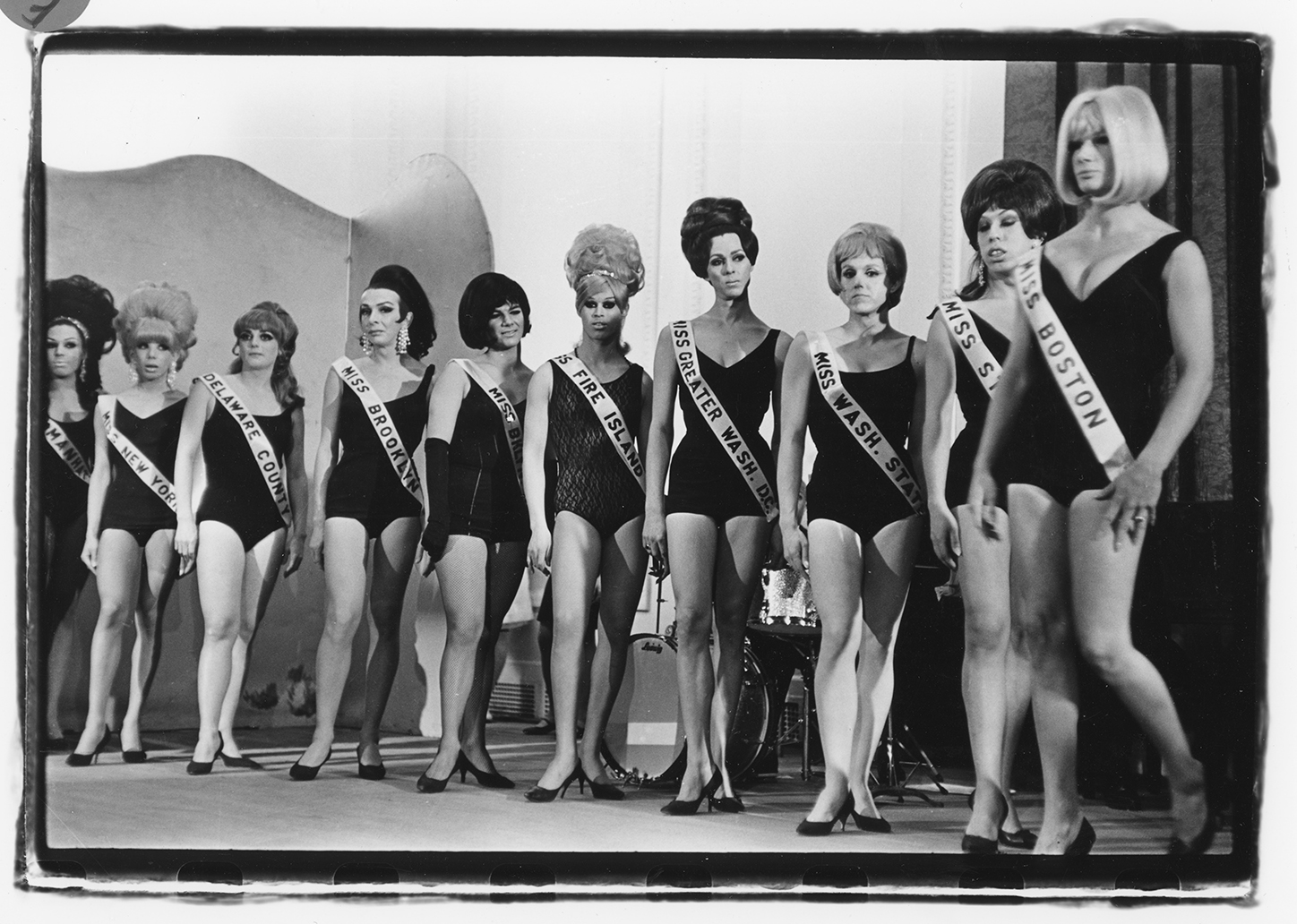
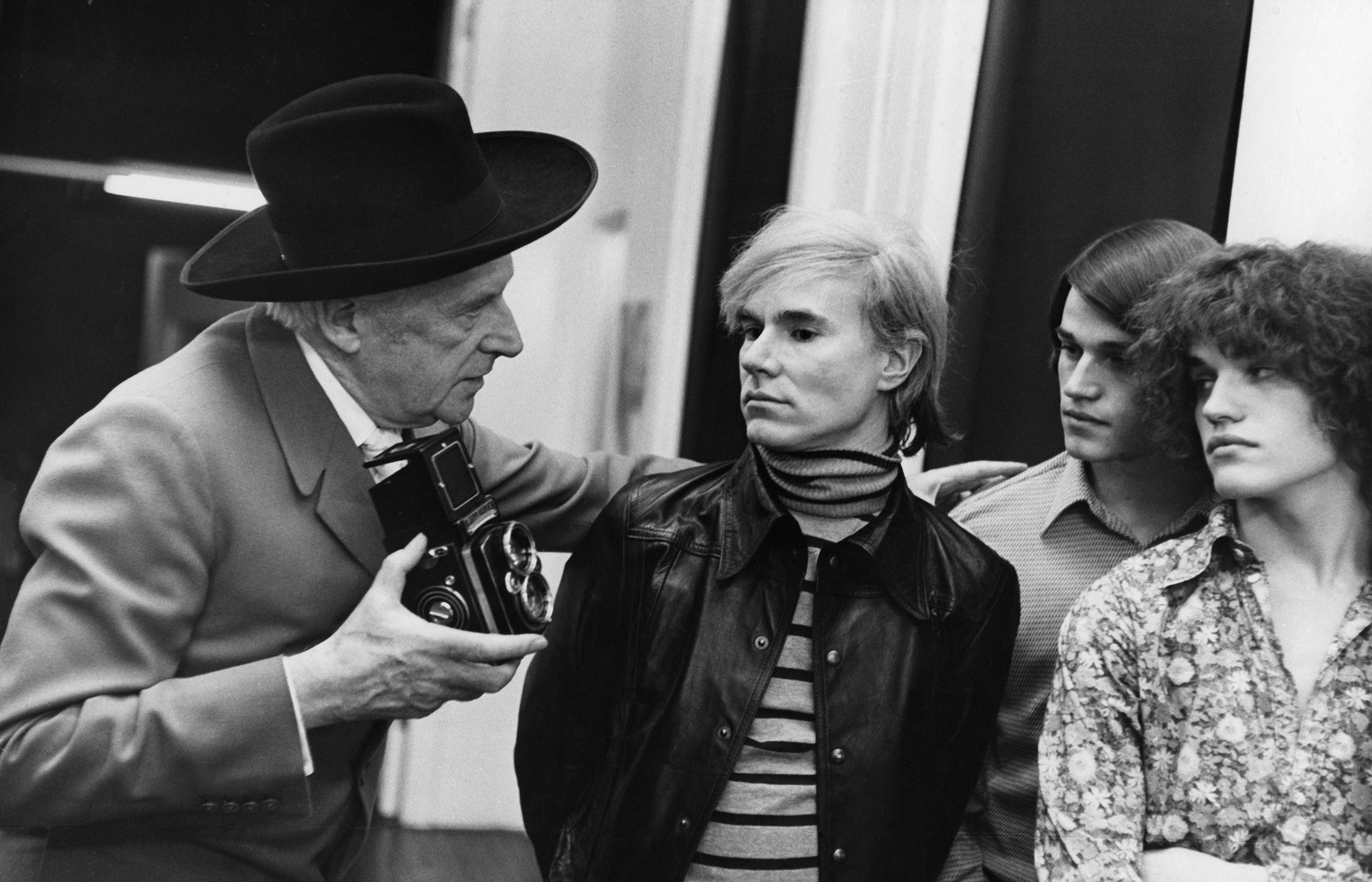
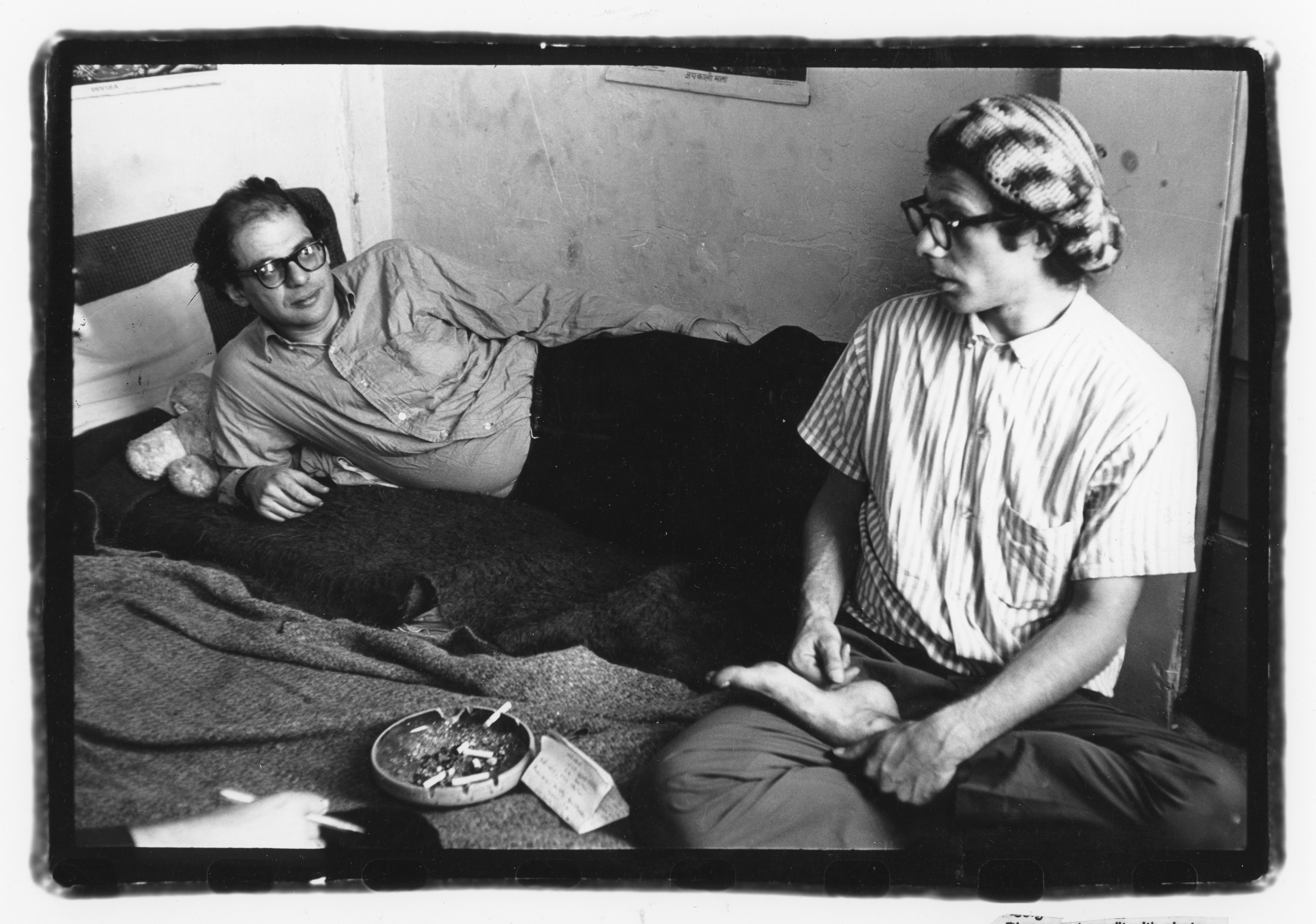

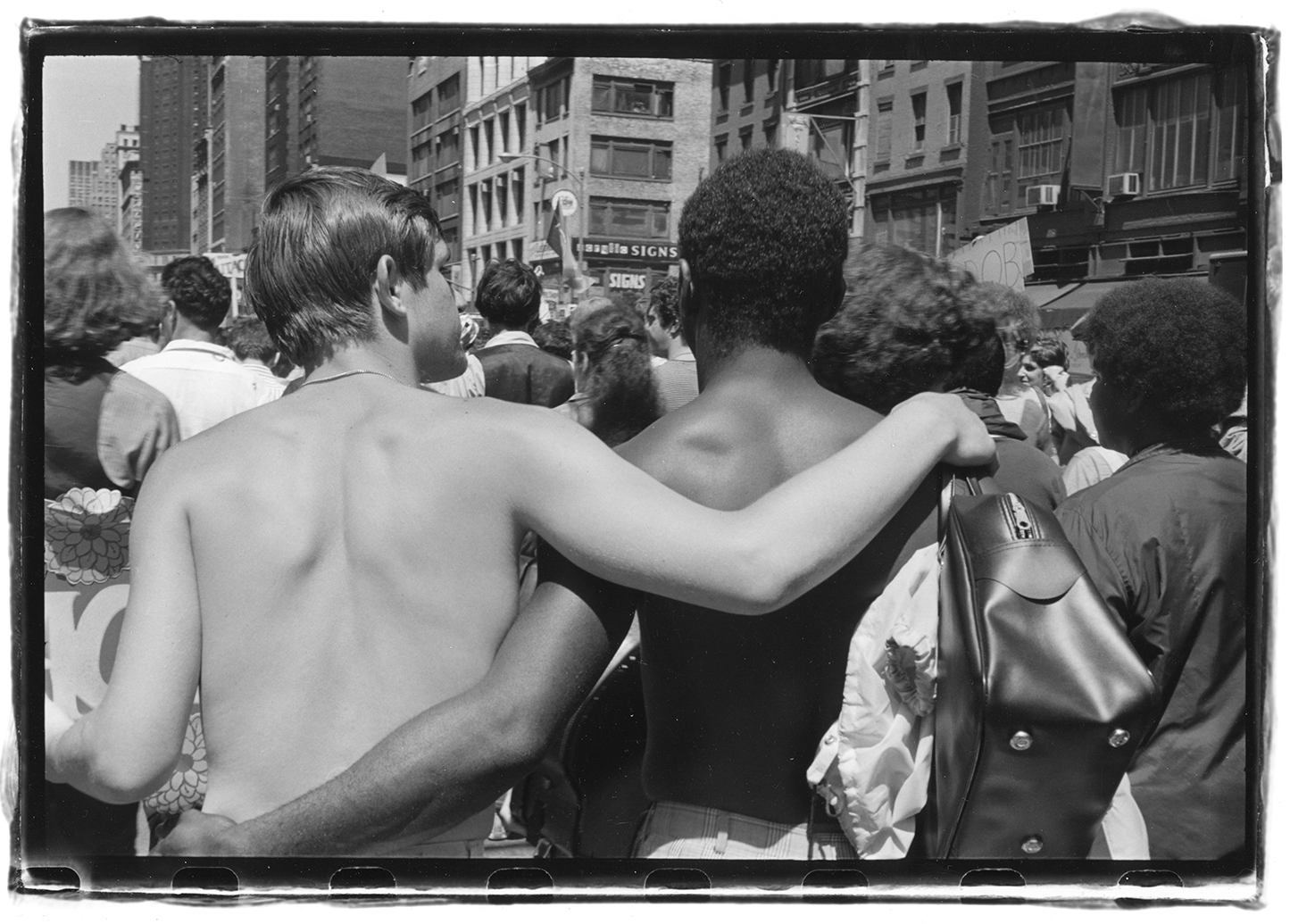
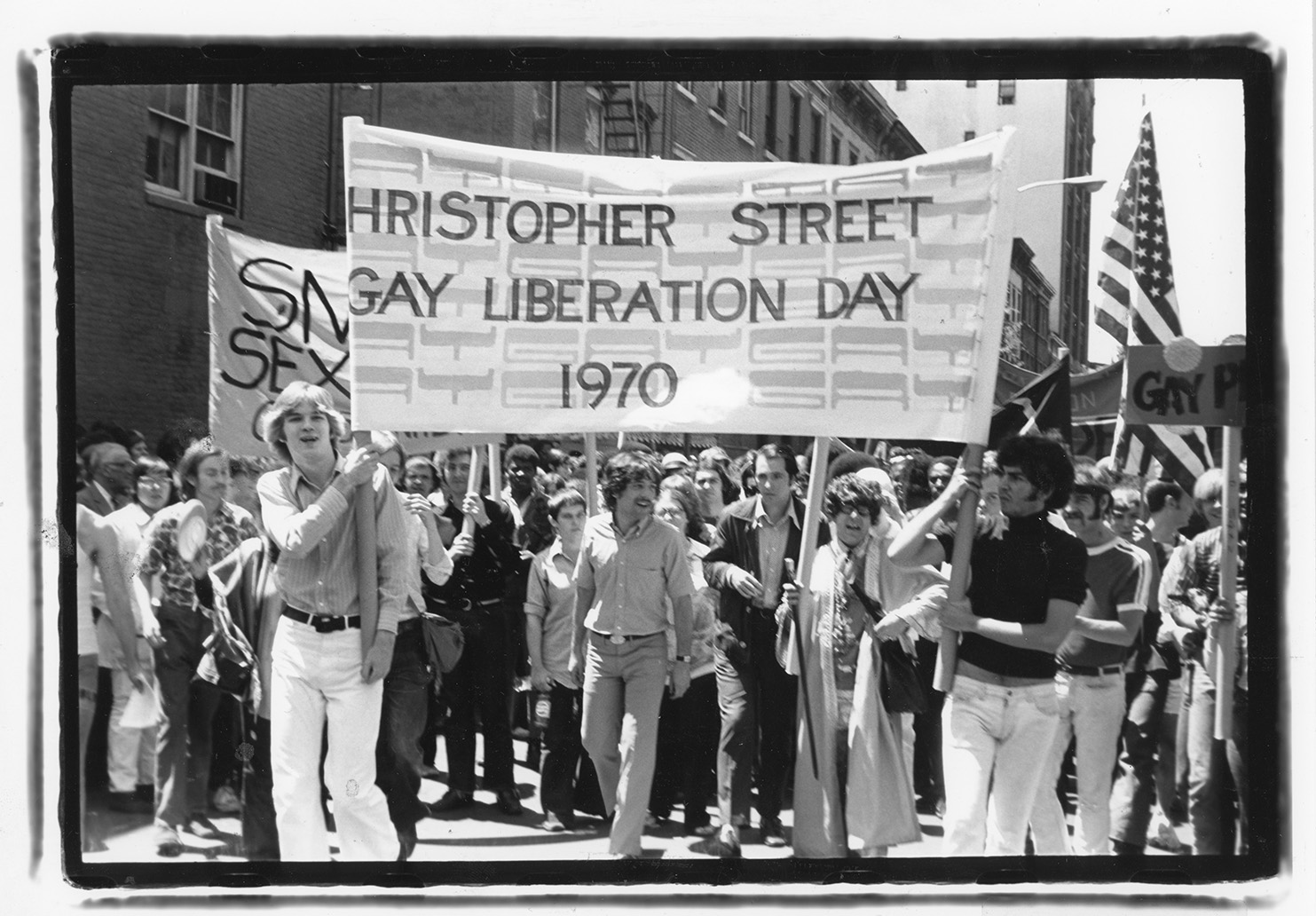
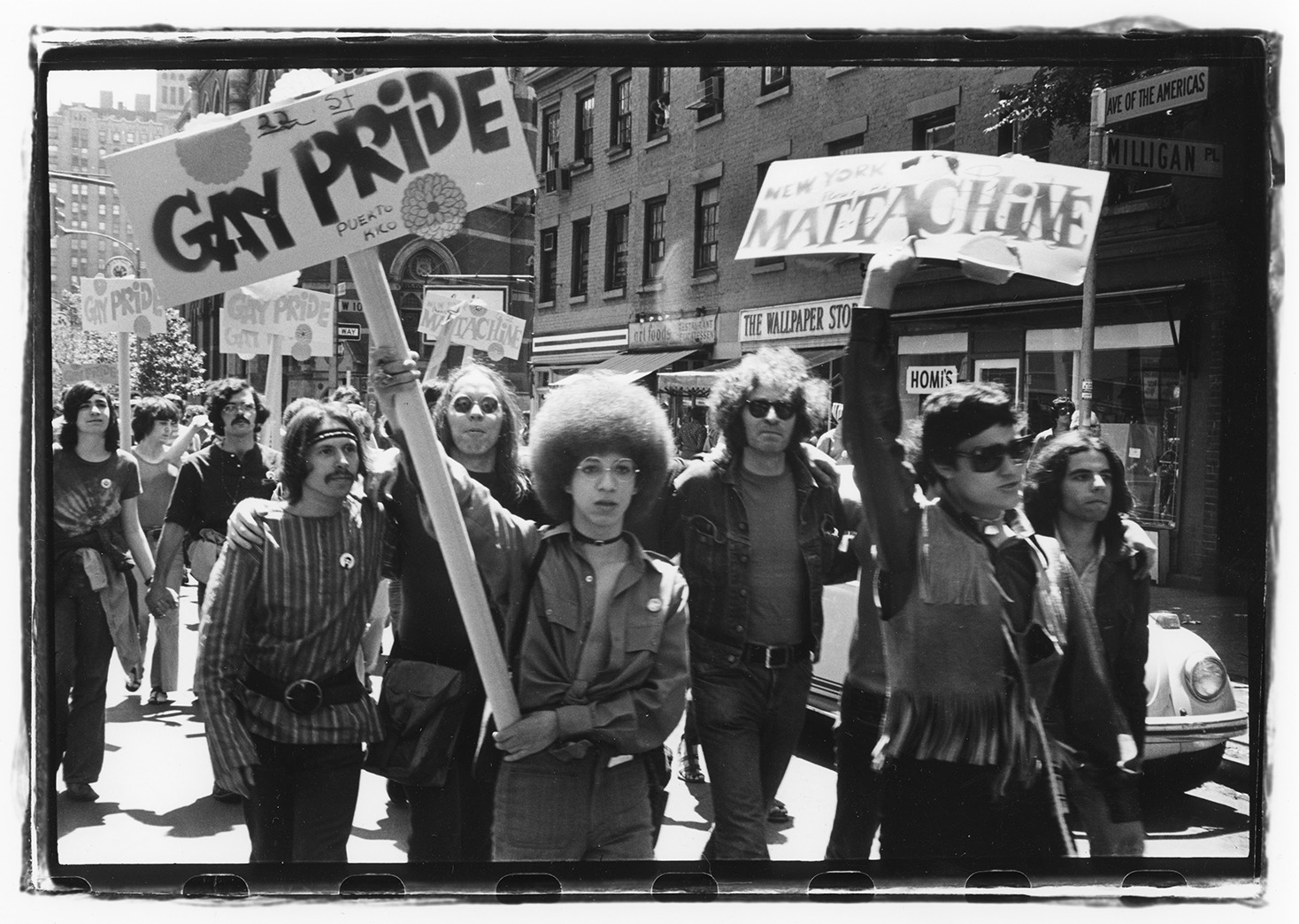

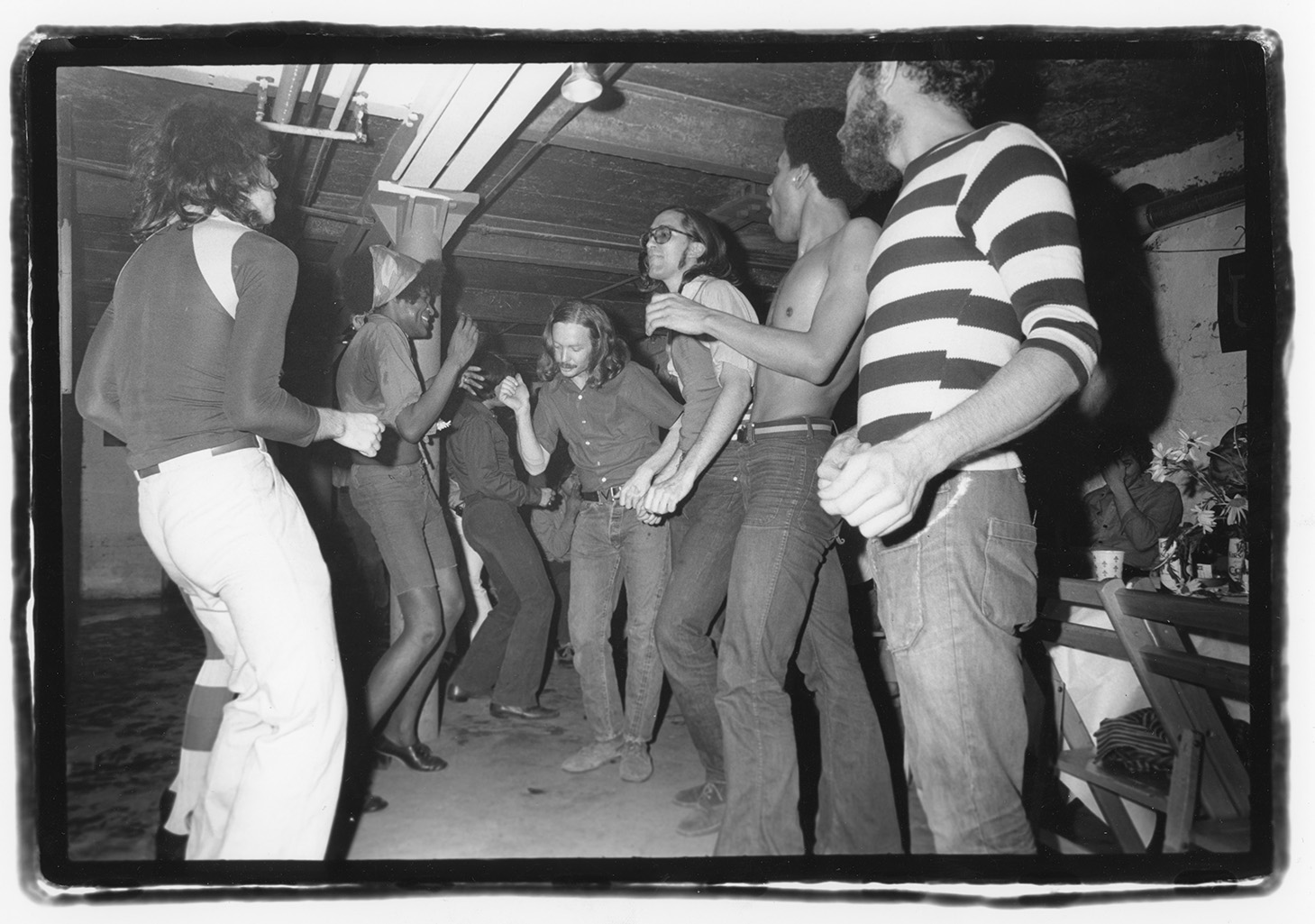

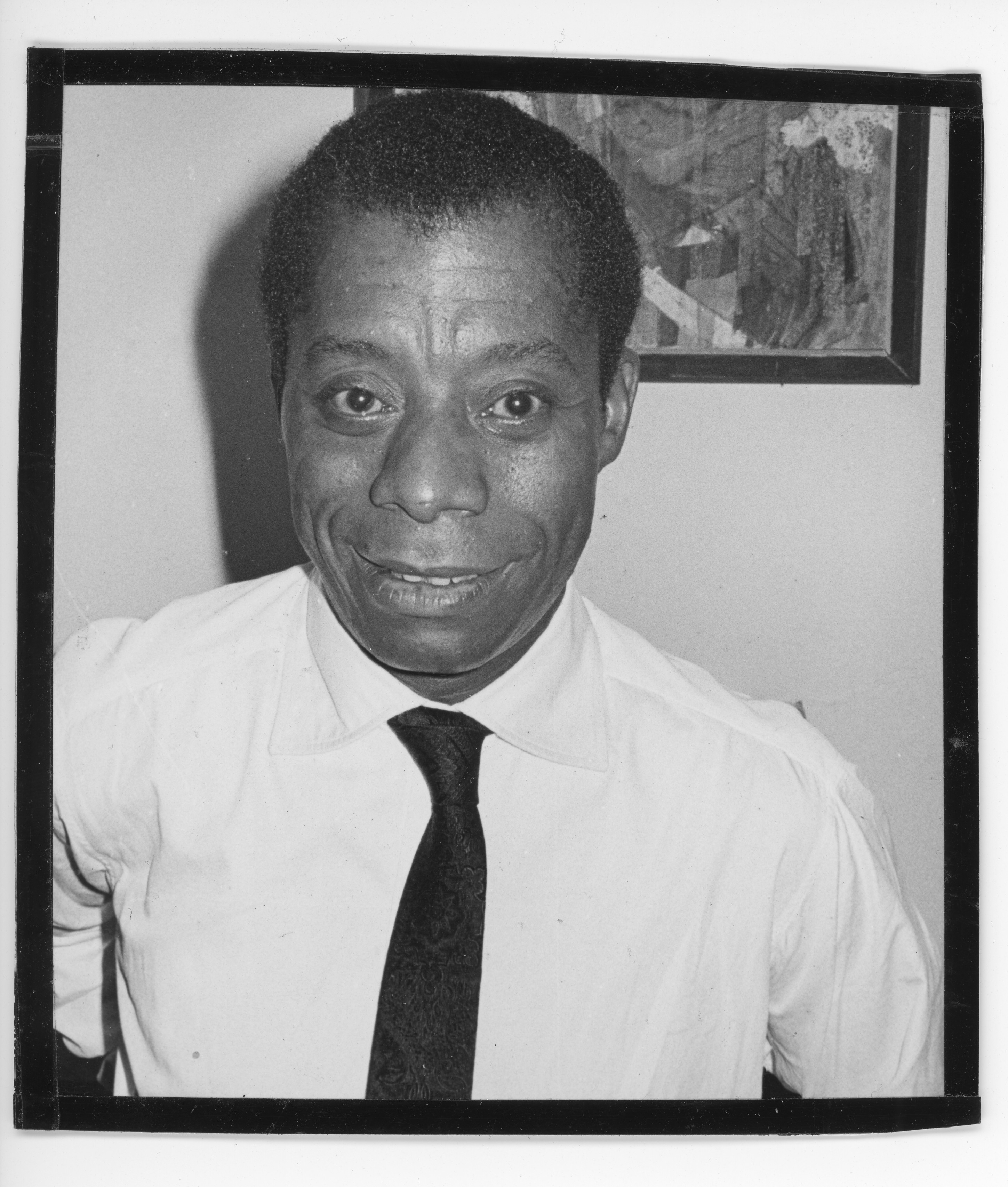
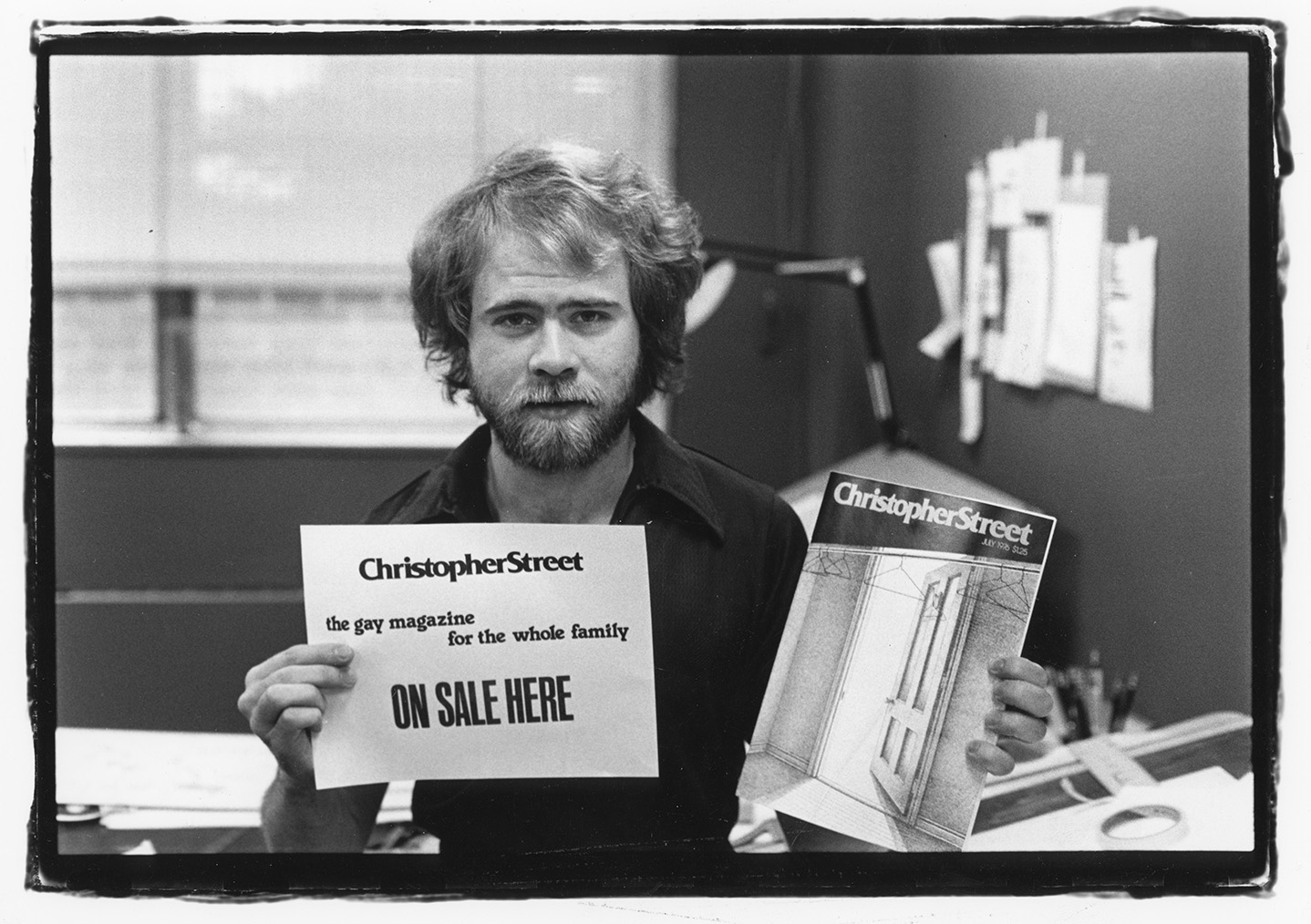
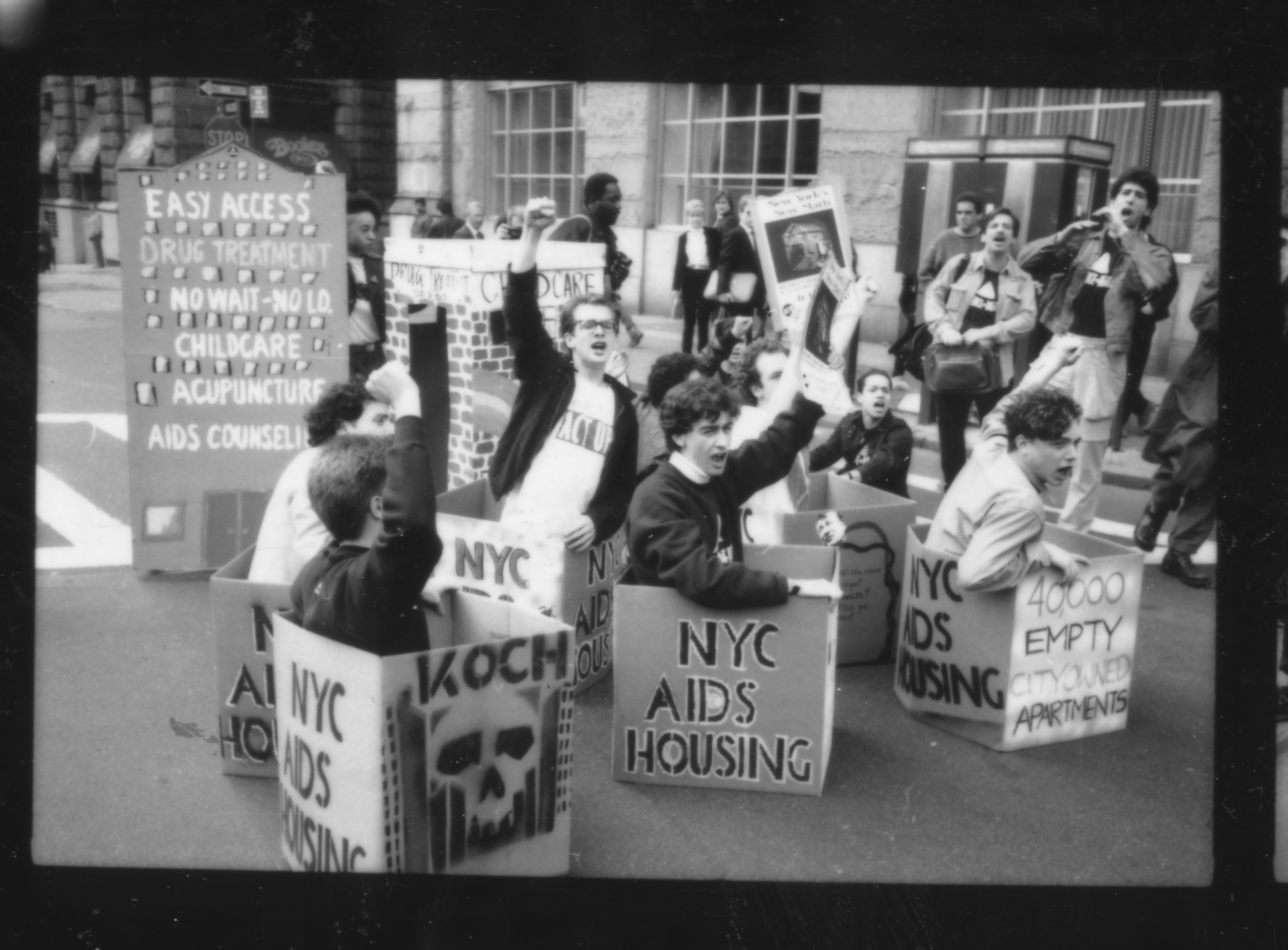
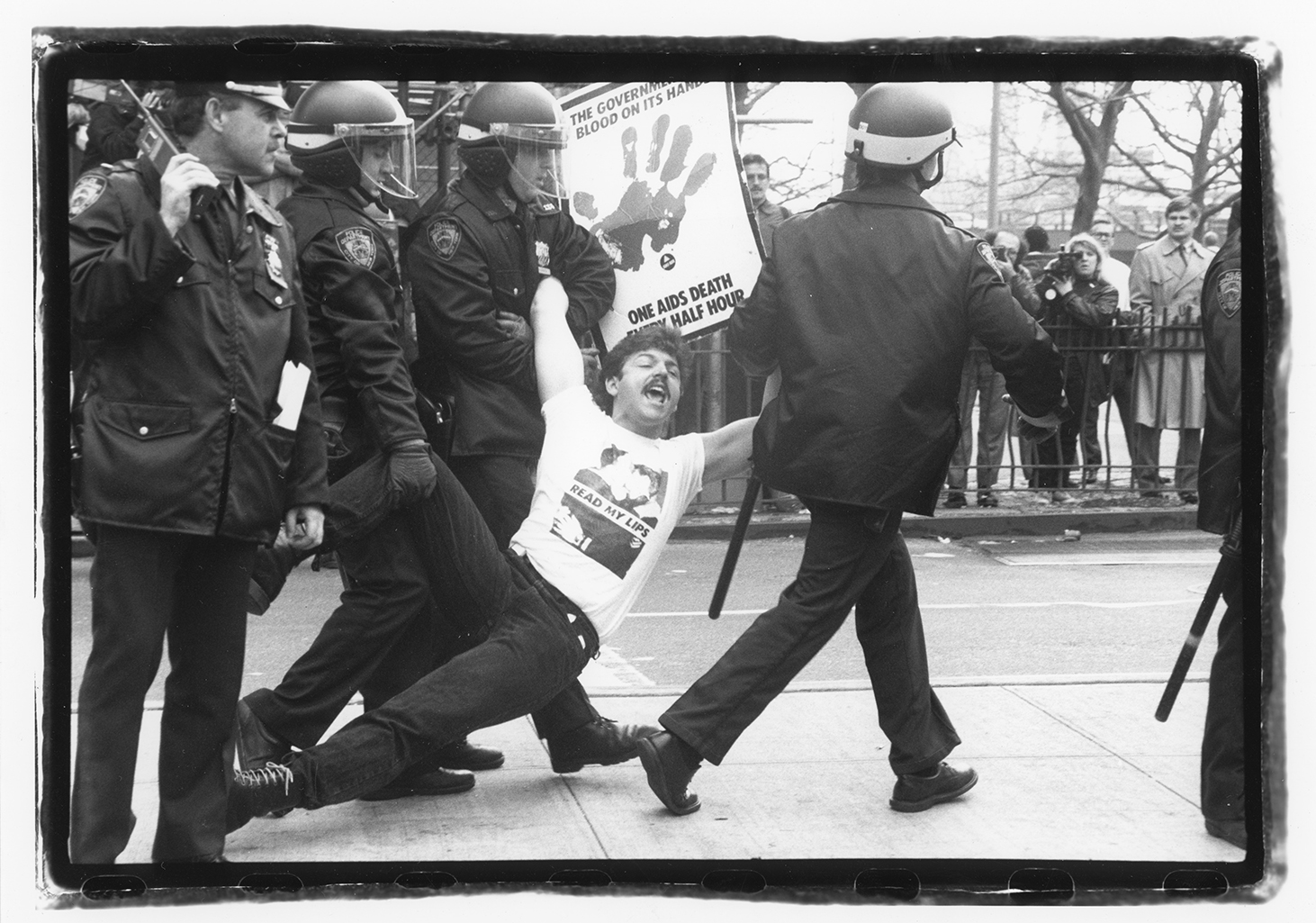
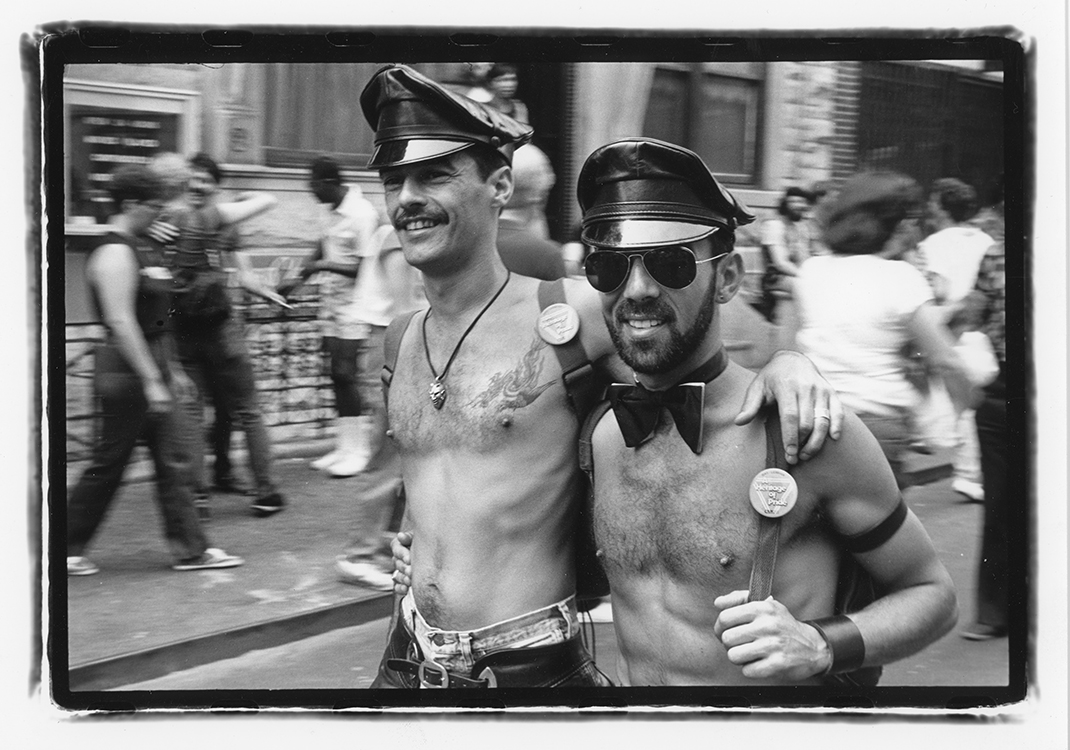
The after section digs into the riots and what came next. In the 1950s and 1960s, it was illegal for gay people to publicly congregate, and bars geared toward gays were systematically denied liquor licenses. The mafia and local police accepted bribes and kickbacks in exchange for allowing these establishments to operate, but the catch was that these bars were still operating illegally. So while the police received $2,000 from the Stonewall Inn per week, they still had the power to raid the bar at will. And that’s what happened on June 27, 1969, except that night the queer patrons of Stonewall — black men, latino men, white men, transgender women, drag queens, people from all walks of life — decided they didn’t want to live in fear. “Two cops, two undercover agents, and two policewomen went inside to ‘observe the illegal sale of alcohol.’ Once inside, the detectives called the Sixth Precinct on a pay phone for backup, and the arrival of the additional cops set off the incident. Patrons were herded out of the bar while cops, headed by Deputy Inspector Seymour Pine, were pelted by gays throwing everything they could find. Thirteen people were arrested.”
McDarrah’s photographs of the Stonewall Inn after the riots show broken chairs, shattered music records, and smashed jukeboxes. Graffitied outside the bar are phrases like “Gay Prohibition Corrupt$ Cop$ and Feed$ Mafia” and “We homosexuals plead with our people to please help maintain peaceful and quiet conduct on the streets of the Village.” The rest of the book depicts Pride Parades and Marches throughout the decades, with an emphasis on the AIDs crisis. Act-Up protesters hold up signs boldly stating, “The Government Has Blood On Its Hands. One AIDs Death Every Half Hour” as police drag them through the street. McDarrah captures demonstrations against George Bush, protestors covered in fake blood at the Waldorf-Astoria Hotel while the President visits. The book’s final photograph is of the most recent iteration of the Stonewall Inn, renamed simply Stonewall, which opened in 1993. The photograph is notably peaceful, there are no rioters or police on the street, just a man and a woman looking in the bar window, the gay pride flag hanging above them.



